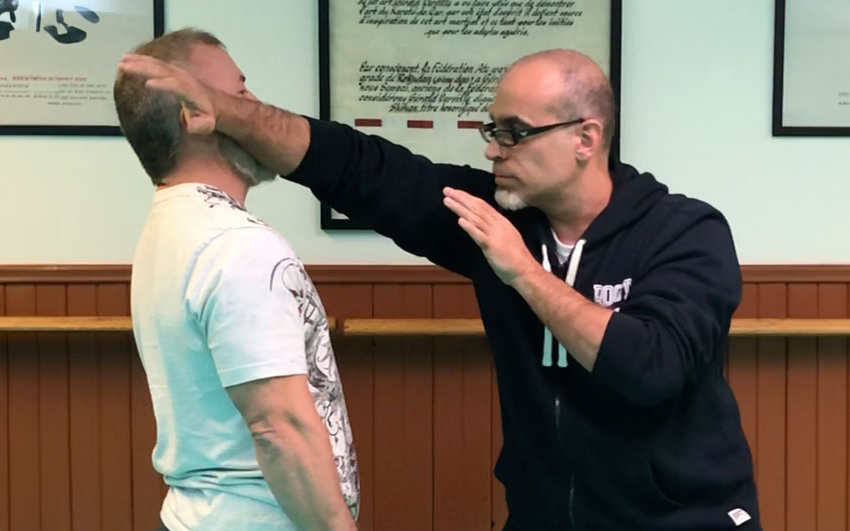10 Practical Karate Moves for Self-Defense
I know it sucks, but we live in a world where violence is omnipresent.
Recent FBI statistics tell us that every year in the United States, there’s an average of 318,000 robberies, 800,000 aggravated assaults, 135,000 rapes, and 16,000 murders.
Even if you’ve never been in a situation where you were directly confronted with violence, these unique self-defense Karate moves will not only give you confidence but can make all the difference if an unfortunate circumstance ever happens.
I said unique not because these are original techniques, they are not – but because their application is.
A Different Guard
Before we get to the applications, I want to quickly talk to you about the guard position. In real life, some aggression can be predicted, and some others can’t.
The guard is a defensive posture that you take when you have a visual indication that someone is threatening you physically, like if someone comes at you aggressively or is seeking to push or hit you.
It’s important to understand that the goal is NOT to exchange blows with your attacker, BUT to escape and stay alive. If you can connect with your strikes, it should give you a few precious seconds to make your escape (run).
The guard that I propose to you is different from other guards you have seen. It’s a self-defense guard, and we develop for our Seionryu Karate and self-defense classes. It’s an unusual guard where both of your hands are kept together in front of you.
There are many advantages to this guard:
- Encourages you to use both hands into your defense.
- Prevents you from being too defensive.
- Prevents you from having a passive hand.
- Makes counter-attacking quick as both hands are positioned close to the opponent’s face.
Like any other guard, it’s essential to understand that this guard should be flexible and adaptive.
The strikes
I have chosen to present to you five Karate striking technique and five self-defense movements that I teach during self-defense seminars.
Regarding the following techniques, you’ll notice that each technique is composed of two or more strikes. Please note that the first strike that you’ll deliver should be seen as a diversion rather than a knockout blow. Of course, it can do damage, but its purpose is essentially to partly block or disturb your aggressor’s vision, giving you a better chance to land your most devastating blow. It’s quite hard to defend yourself when you have someone hands in your face.
1. Palm Strikes
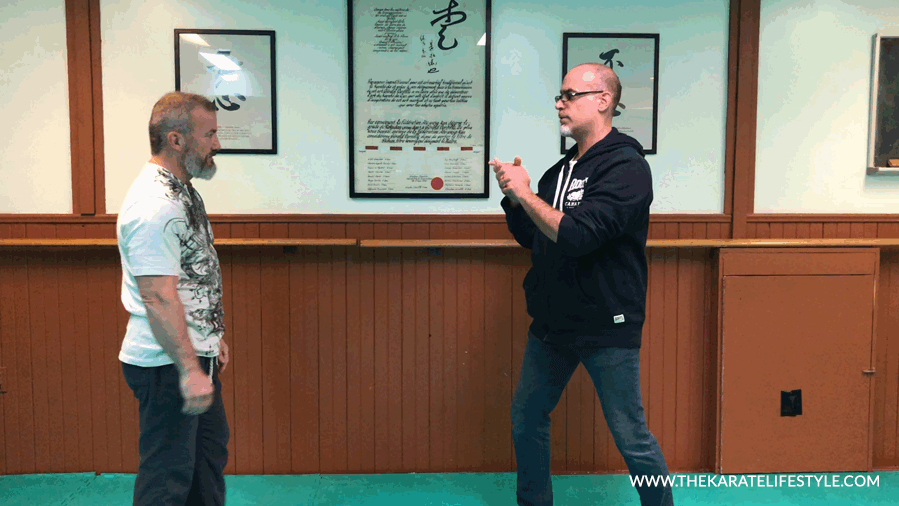
If you punch your opponent’s head in a self-defense situation, there are high chances you’ll end up damaging or even breaking your hand. Palm strikes are a safe and effective alternative to the punch. Using the heel of the palm to your attacker’s nose, jaw, or ear can not only cause severe damage, but it can potentially knock him out cold. That’s precisely what you want.
Instructions
- Hold your guard.
- With your front hand, flex your wrist.
- Step forward and aim for either the attacker’s nose or jaw. This first strike is done mainly to disturb and block your opponent’s vision.
- Right after impact, launch your rear palm strike to the nose or the jaw. This second strike in your powerful hit.
- Rotate your hips for maximum power, keep your core solid and push with your rear leg.
- Run away.
2. Forearm Strike
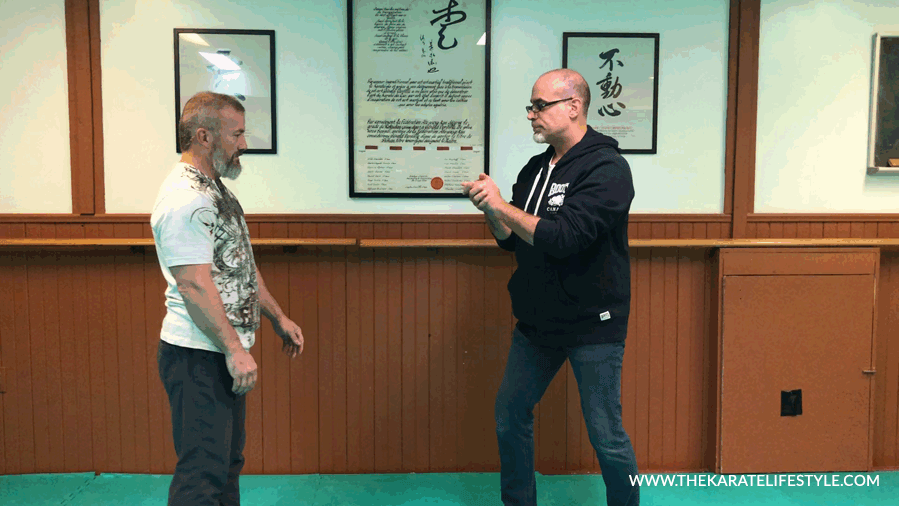
The forearm strike is a technique that I systematically tech during self-defense classes. It’s a pretty uncommon yet very powerful self-defense movement. The forearm strike is devastating because it is performed by closing into your aggressor. By its nature, the forearm strike allows you to pull your whole body weight as you strike, targeting your aggressor’s throat.
Instructions
- Hold your guard.
- Your opponent comes towards you trying to grab or strike you.
- Close the distance on him and go right in.
- Extend your arm to a 45° angle and aim in a straight line for the side of your opponent’s jaw/cheekbone. Again, this is done to partially cover your opponent’s vision making it easier to land your second strike.
- Go for your opponent’s throat in a straight line with your rear forearm.
- Try to hit with the last half of your forearm (close to your elbow).
- Rotate your hips, push with your rear leg and keep your core stable.
- Run away.
3. Elbow Strike
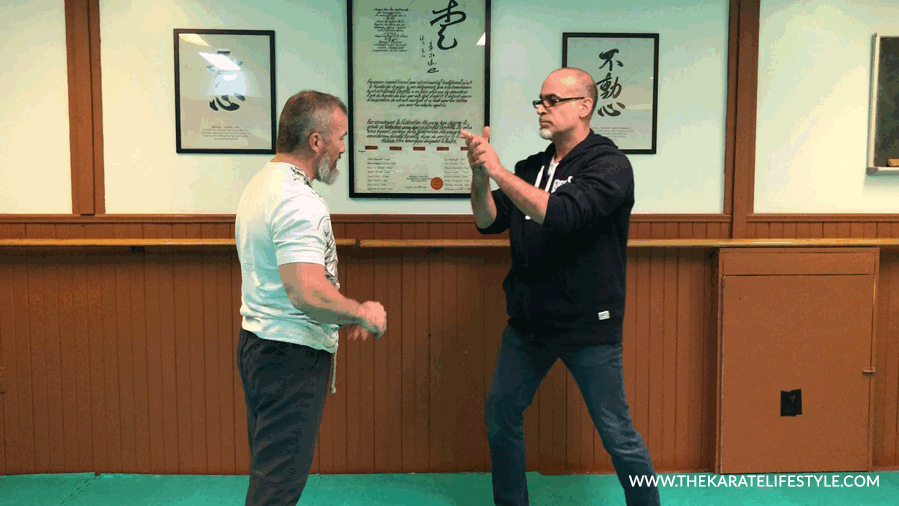
Like the forearm strike, the elbow strike is a surprisingly powerful weapon. Even a kid or a petite woman can generate an incredible amount of force with this movement. The elbow strikes is a short-range weapon, so it has to be used when the aggressor is close to you. The force of the blow can definitely break or even knockout an aggressor.Instructions
- Hold your guard.
- Your aggressor is at close range.
- Close the distance on him and go right in.
- Again, extend your arm to a 45° angle and aim in a straight line for the side of your opponent’s jaw/cheekbone.
- Right after impact, strike his neck, jaw, cheekbone, or temple with a circular elbow strike.
- Like with every move, rotate your hips, push with your rear leg and keep your core stable.
- Run away.
PS: Although this movement looks similar to the forearm strike, it’s different. The forearm strike is a linear attack, whereas the elbow strike is a circular one.
4. Kick to the groin
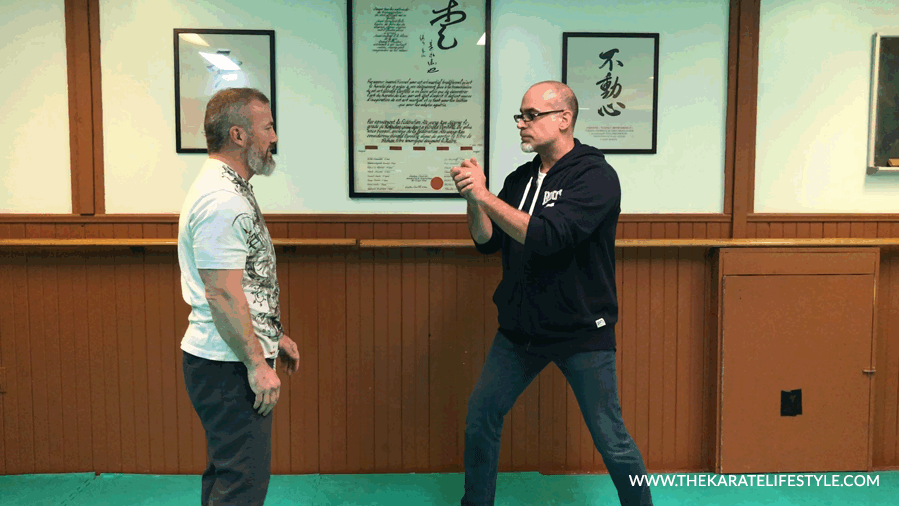
It’s impossible not to include the groin kick into this list. If someone’s coming at you aggressively or is trying to grab or hit you, the groin kick is a great choice. If the kick lands, you can be assured that it’ll deliver enough power (and pain) to paralyze your attacker, allowing you to escape to safety.Instructions
- Hold your guard.
- Your opponent comes towards you.
- Go in and extend your arms, keep your hand one over the other, and hit your aggressor’s face, partially impairing his vision.
- Keep your hands on your opponent’s face and extend your rear leg, aim for your aggressor’s groin area.
- Thrust your hips forward, slightly lean back, and keep a stable core.
- Kick energetically and make contact with your lower shin area.
- Run away.
5. Knee strike
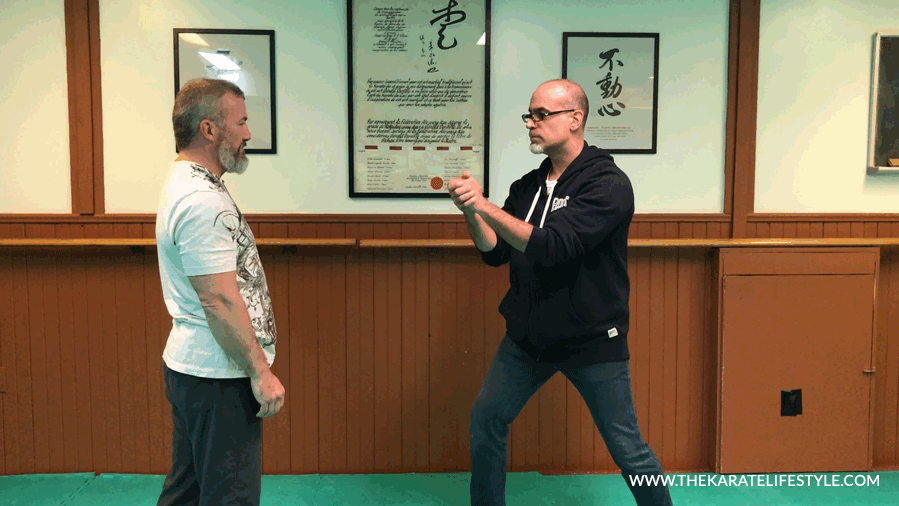
The knee strike is another simple yet effective Karate and self-defense move. The knee strike can be delivered on any part of the aggressor’s body but is especially effective when it’s targeting the thigh, abdomen (solar plexus, ribs), and head. The fact that this movement is very direct and easy to execute make it an excellent option for defending yourself.
Instructions
- Hold your guard.
- Your opponent comes towards you but he’s close (you’ll have to use the close guard).
- Go in and keep your arms together, bent, and hit your aggressor’s face, with your hands/forearms, momentarily making it challenging to see the follow-up attack.
- Keep your hands on your aggressor’s face and launch your rear knee, aiming for his groin area or solar plexus.
- Thrust your hips forward, slightly lean back, and keep a stable core.
- Run away.
The applications
Here I have chosen what are arguably the most common attacks perpetrated against men and women alike. You’ll notice that the counter techniques are moves that we saw in the preceding paragraph – palm strike, forearm strike, elbow strike, knee strike, and groin kick.
Avoid this mistake
One of the most common mistakes people do in self-defense is being too defensive and just try to block the aggressor’s attacks. Self-defense is different than sparring – you can’t afford being defensive. If your physical integrity is threatened, you have to commit, meet your aggressor, and go in.
1. Choke Against the Wall Defense

This attack is commonly found in crimes of passion or domestic violence situations, where the aggressor is using raw strength and power over someone. An aggressor puts his hands around your neck, squeezes and slams you up against a wall, a tree, a car, etc. Like every self-defense techniques, the goal with this move is to use the least possible amount of strength to break free. You’ll be surprised at how effortless it is to break the attackers choke when you use the power of your shoulder.
Instructions
- The aggressor is pinning you against a wall, choking you with both hands.
- Lift one of your arms above your head.
- At the same time, raise your shoulder (on the same side as the lifted arm) and deflect your opponent’s hands.
- Simultaneously twist your body in the direction of your lifted arm.
- With the same arm, hit your opponent’s neck with your forearm.
- With your other hand, palm strike your attacker’s jaw, ear or temple (don’t forget to rotate your body for momentum).
- Run away.
2. Wrist Grab Defense
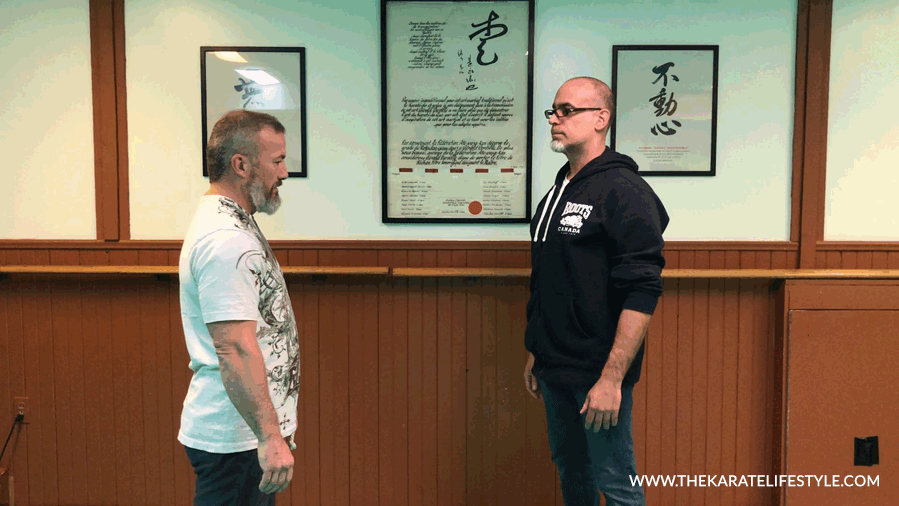
The wrist grab is generally perpetrated against a woman, and its purpose is usually abduction. When the wrist grab is done to a man, it’s usually to prevent the victim from protecting himself from the punches to the face that will follow. The thing here is to prevent being pulled: you wanna jump right in by closing the distance and hitting from the inside. A successful forearm strike will definitely break an opponent of any size.
Instructions
- Your aggressor grabs your wrist and pulls you.
- Close the distance by bringing forward the leg opposed to the side of your body that’s been grabbed.
- At the same time, hit him with a forearm strike to the neck and simultaneously extend down/forward your grabbed arm.
- With your rear arm (the one that was grabbed), attack your opponent with a palm strike to the jaw or ear.
- Run away.
3. Hair Grab Defense
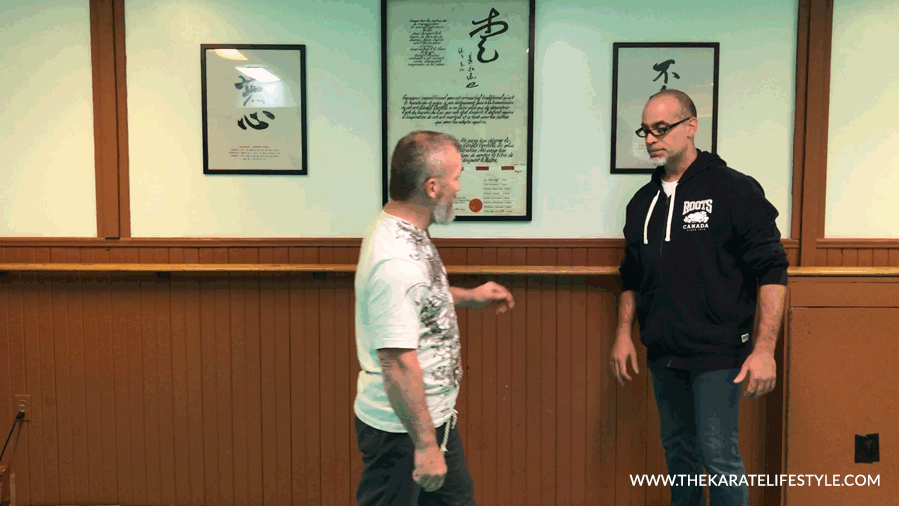
The hair grab is a very common attack perpetrated against women, and it can be used for both domination and abduction. The goal, like with every self-defense techniques, is to prevent giving the aggressor enough time to control you. If you don’t react fast, you can end up in an even more problematic situation, so you want to block the aggressor’s hips (preventing or making it difficult for him to drag you) and strike his groin area from a favorable position/angle.Instructions
- The attacker grabs you by the hair and starts pulling you.
- Close the distance by bringing one leg forward.
- With your forearm that’s on the same side of your forward leg, block your opponent’s hip.
- At the same time, lower your position to stop or make it difficult for him to pull and abduct you.
- Bend slightly forward and swing your rear forearm between your aggressor’s legs, into his groin area. Slightly rotate your body while attacking.
- Run away.
4. Swinging Punch to the Head Defense
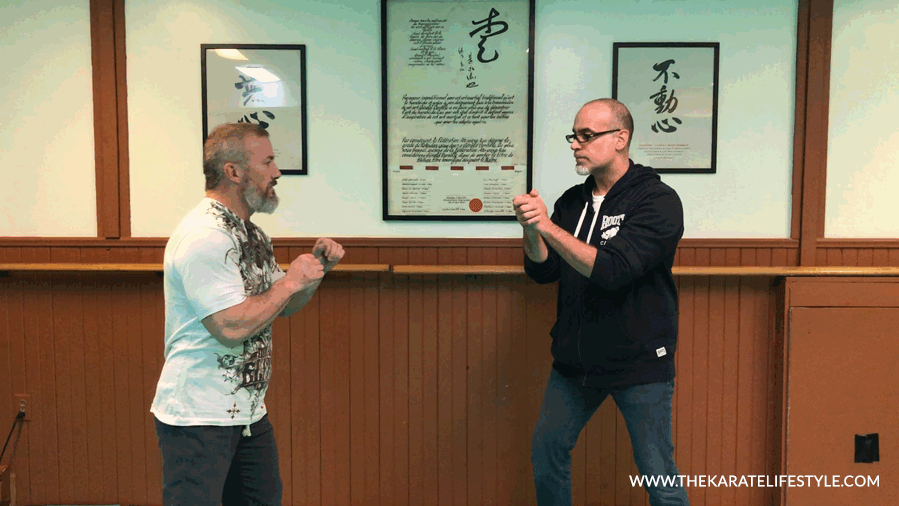
Along with the straight punch, the swinging punch to the head is, without a doubt, one of the most common strikes of all. Although this punch can be predictable (when a determined attacker comes at you), it can also be sneaky. Here again, your best choice is to get inside and avoid getting too defensive, waiting for more punches to come.
Instructions
- Your aggressor swings a punch to your head.
- From the guard position, get inside at an angle (slight dodge).
- At the same time, block the punch with both hands. Because the swinging punch comes in a circular motion, your blocking arms have to be bent for better protection.
- Immediately after impact, quickly ‘separate’ your hands and strike your attacker’s neck with a forearm strike of your inside arm.
- Right after, hit your opponent’s face with an elbow strike with your rear arm.
- Run away.
5. Straight Punch Defense
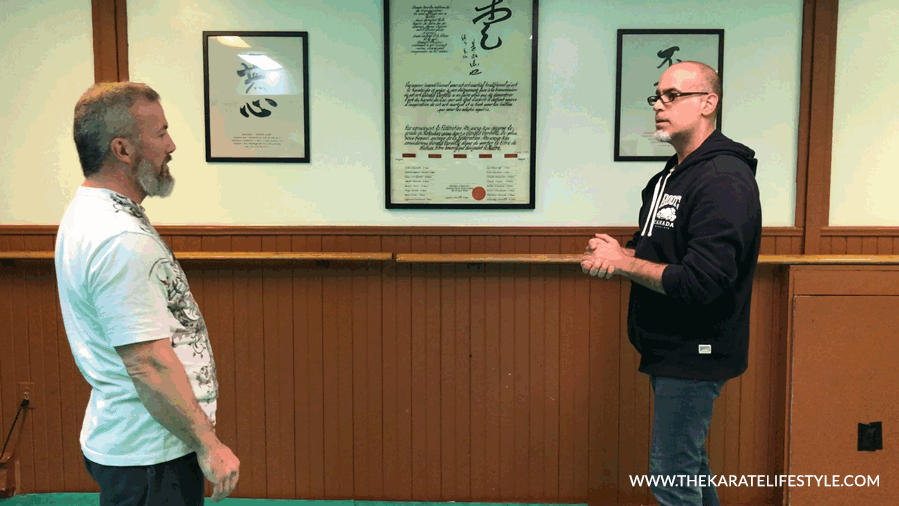
As I said before, the straight punch is also a very common attack done on the street. As you know, that’s a show stopper, so be ready to defend against it. The straight punch is a fast attack and can be difficult to predict, so maintain proper distance and stay vigilant.
Instructions
- Your attacker throws a straight punch at your face.
- From the guard position, get inside at an angle (slight dodge)
- Simultaneously block the punch with both hands, but this time extend your arms and rotate your body (like a baseball batter) to deflect your opponent’s blow.
- Immediately after impact, quickly ‘separate’ your hands and strike your attacker’s neck with a forearm strike with your hand that is close to his body.
- With the same hand, grab your opponent’s neck, pull his head down/forward, and deliver a knee strike with your front leg to his body (of face if you can).
- Right after, hit your opponent’s face with an elbow strike for your rear hand.
- Run away.
Conclusion
It’s one thing to have read this article, but it’s another to actually be able to apply those self-defense Karate moves or techniques. You definitely need to practice these moves often so that they can become second nature should the situation arises. Remember to avoid being too defensive! I know it’s scary but, you have to get inside your opponent attack – it’s safer than just defending blows after blows. Trust yourself, trust these moves – they work – and they can possibly save your life.
- 10 Ways Meditation can Improve Your Karate - March 6, 2024
- Is Tai Chi Effective for Self-Defense? - February 16, 2024
- Do You Need to Add Ground Grappling Into Your Karate? - February 15, 2024

